Designing the Places where my Children will Learn
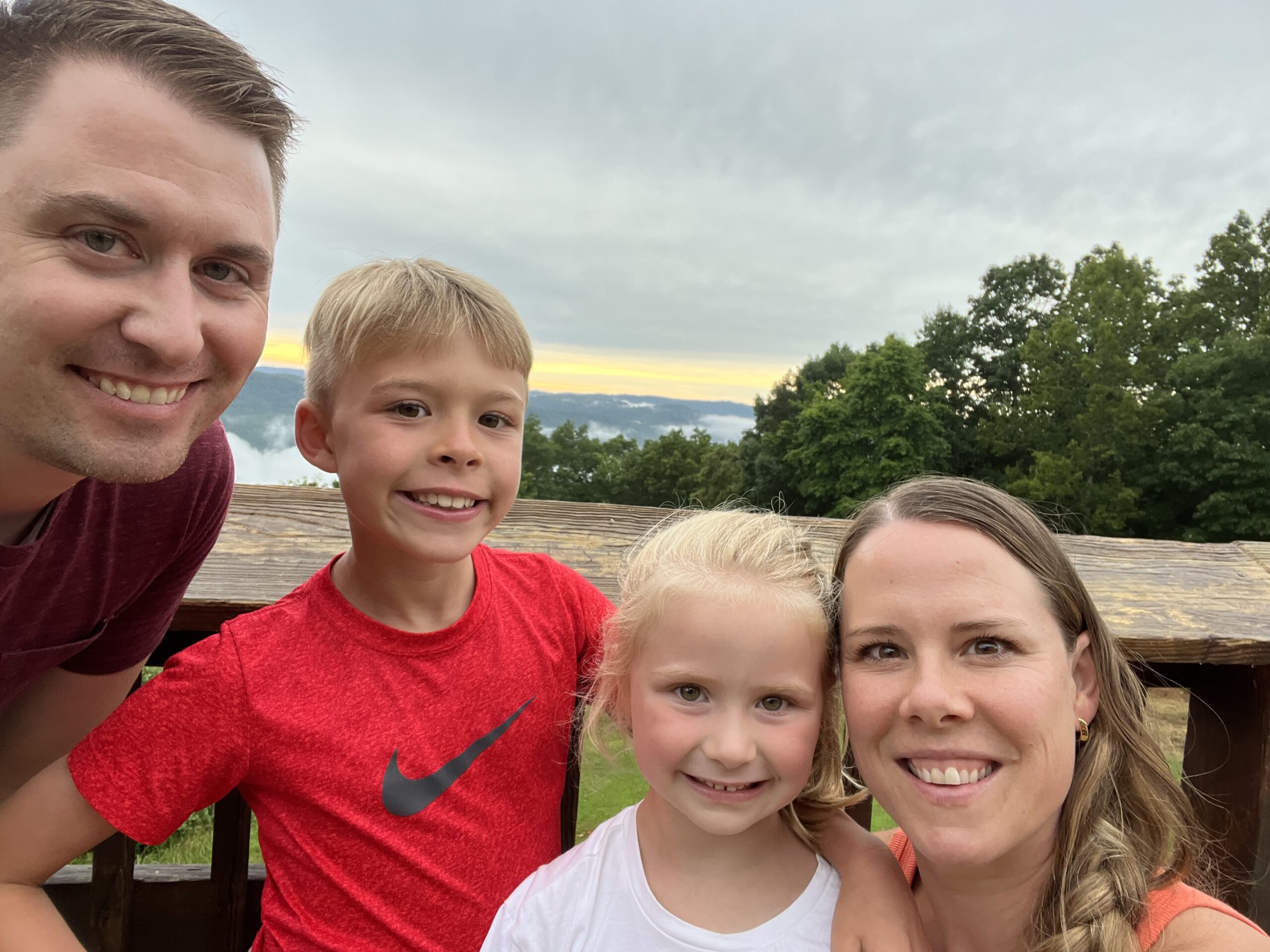
When I look back now, it feels like I came into the world of K-12 education architecture mostly by chance and less by deliberate choice or passion. How can that be? Didn’t you have a plan for your career? Valid questions, and the answer is that I had part of a plan but sometimes life also just helps you pick a path that ends up working out for the best. A quick personal history and hopefully that will make more sense.
When I think back to my childhood, I realize that I had several moments with K-12 architecture that helped form my path into this career. First, when I was in elementary school an addition was constructed on the back half of the building to create additional classrooms. I remember the whole school going outside on a cold spring day for a ground-breaking ceremony and I remember the excitement everyone had about what was to come. Back then, I didn’t know what architects did or all the steps that need to go into a large building project. I probably barely knew what the word construction meant. That excitement was there when the addition was completed sometime later. It was interesting to think there were classrooms now where before there was nothing and parts of the existing school were changed. For example, we now walked to the library through an entirely new corridor, and I remember the windows in the corridor wall that allowed you to look into the library. What? Windows inside the building? Mind-blowing to me at the time.
Years later just before I started high school, my school district consolidated from two high school campuses into one building. That meant an even larger addition to one of the original high school buildings. It was more new than existing from what I could tell. The library had huge windows and skylights that flooded the space with light. The second-floor classrooms overhung to create a large portico area where the buses could drive under to drop students off. Buses driving under a covered area created by classrooms above? Again, mind-blowing to me.
My high school had a vocational program teaching the basics of architectural drawing and construction. I was always interested in architecture, but I think living through those building projects and the excitement of attending school in a newly created environment helped shape that decision to pursue architecture.
After graduating college, I moved to South Carolina for a year and spent most of my time there working on an exceptionally large addition/renovation project for a high school in the capital, Columbia. At the time I was there, it seemed like every architecture firm in town was working on school projects and many schools around the city were being built, added onto or renovated. So by chance of being in that city at that time, I was thrust into the world of K-12 education architecture.
When I moved back to Ohio, I found Triad’s mixture of mostly K-12 education and miscellaneous other project types very appealing. My previous K-12 experience came in handy but at the time, I probably used it more as a way in the door versus being my main desired career path. Over the course of the next several years, I worked on many projects for Westerville City Schools and found it compelling to watch how they kept up on the ongoing maintenance type projects like HVAC and roofing replacements to keep the schools functioning well in order to not distract from learning, but also, how they would find ways to bring inspiration to students with other additions and renovation projects. We reinvigorated the library program at Walnut Springs Middle School with a renovation that turned the library into the “Center For Inspiration” and became the most-desired room for students and staff to spend time in. We helped propel the next generation of technology-focused college students and professionals with the “The ShOp” fabrication lab at Westerville North High School that converted an old computer lab into a state-of-the-art design and production laboratory. At Pointview Elementary, we inspired students by inviting every student to share feedback on what the addition and renovation of their school should include. One of those students boldly suggested the building should have a glass roof. How crazy! This led to the connector between the original building and the addition being an entirely glass corridor, including the roof, with a sign proclaiming it as “Emma’s glass roof”. I’m sure that experience for her was equally, if not more, mind-blowing than the experiences I had with building projects in my schools. Admittedly, I would have never come up with the idea of having a glass roof at that age, maybe not even now.
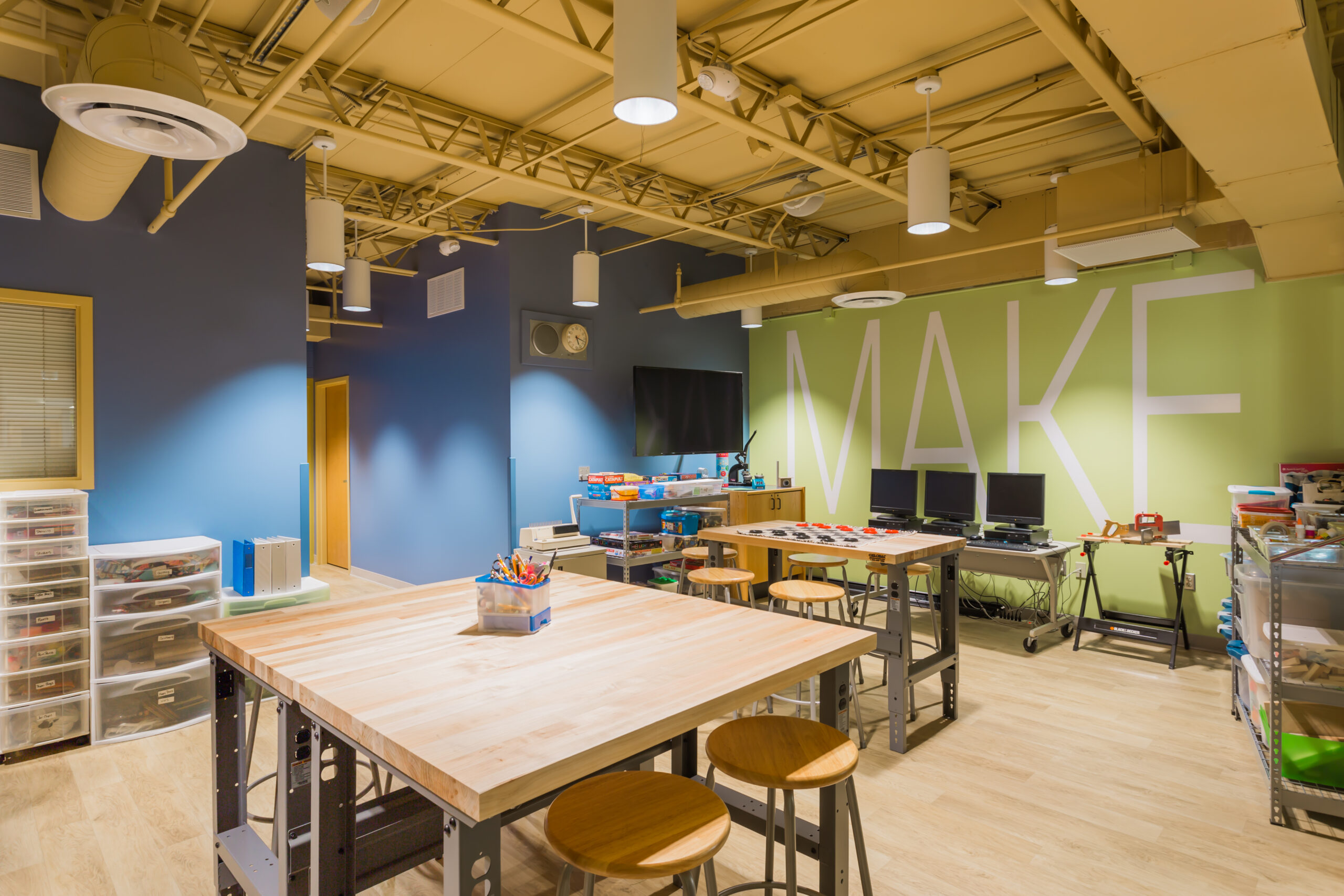
The Maker Space at Walnut Springs Middle School
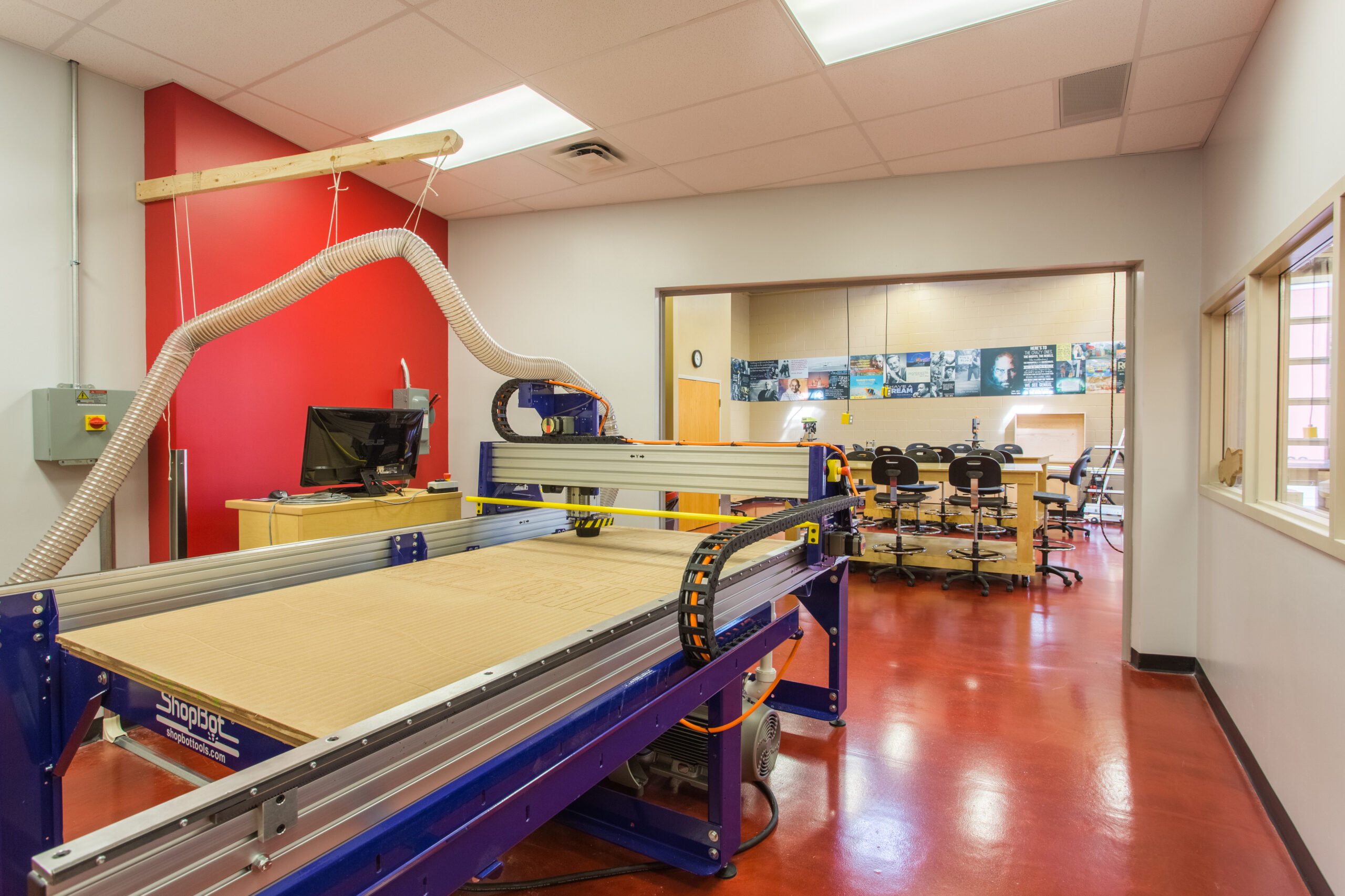
The ShOp at Westerville North High School
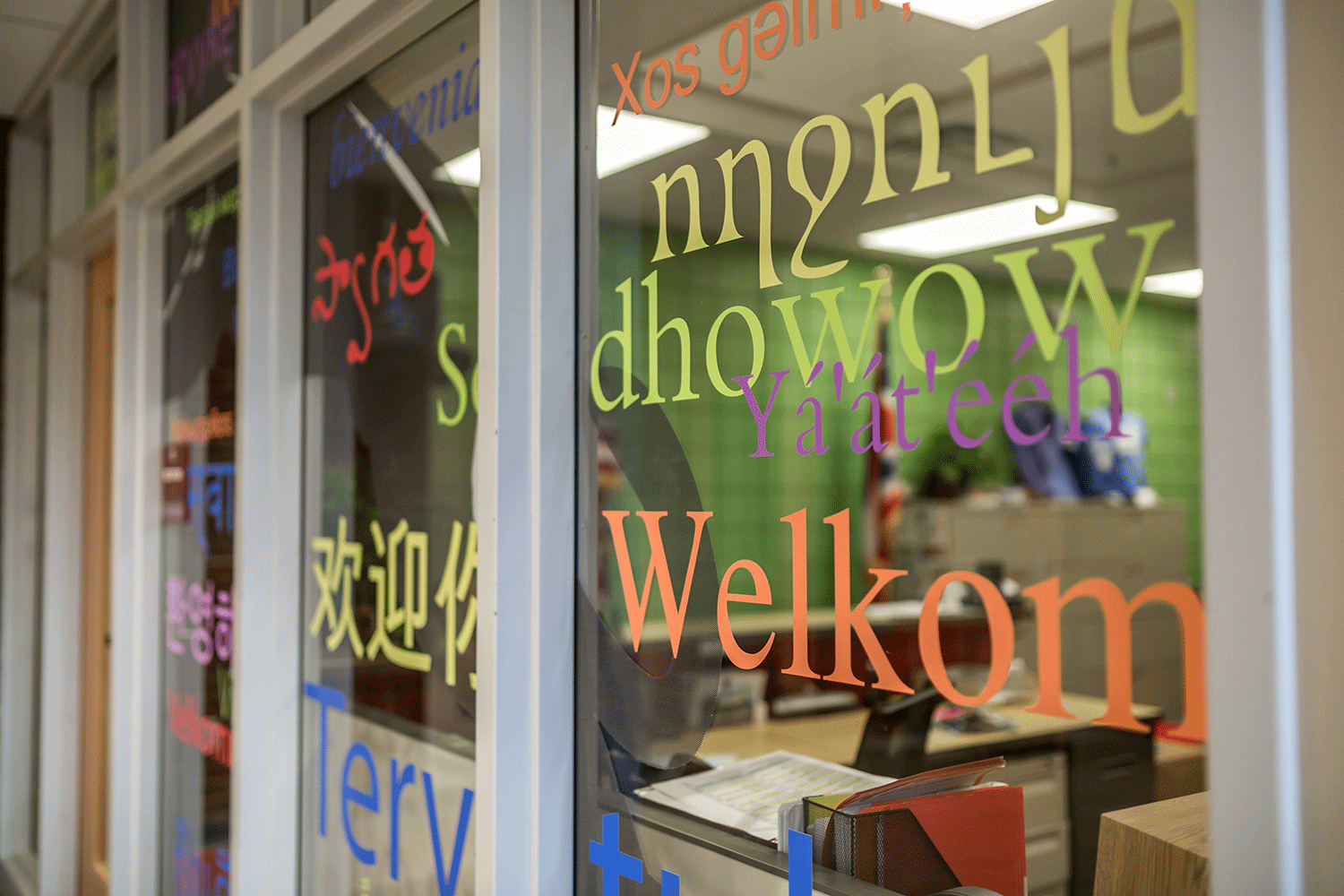
The "Welcome Wall" at Pointview Elementary with "Welcome" Written in all the Languages Represented at the School
In those years working for Westerville City Schools, we bought a house and started a family in the school district. By chance of finding the right house at the right time, we ended up in the Minerva Park neighborhood. We moved to Westerville City Schools partly because we saw the attention they gave to their buildings to help facilitate better learning. In the time that we’ve lived here, the original Minerva Park golf course closed, and new houses were built to expand the neighborhood. This led to the opportunity to create new schools in the neighborhood. It’s been a joy to watch the excitement that came along with the construction and opening of Minerva France Elementary School and the current construction of Minerva Park Middle School. It has breathed new life into the neighborhood and the southern half of the school district where new schools haven’t been built in decades. We took inspiration from the historic Minerva Park amusement park that was the origin of the Minerva Park neighborhood, including the turret design from the original casino/dance hall and a roller coaster theme in the cafeteria. It’s named the Green Line Café after the train line that brought people to the amusement park from downtown Columbus.
It’s been fun watching my kids attend the new school and knowing they will eventually attend Minerva Park Middle School and later, Westerville South High School. Where, we’ve been designing additions and renovations in multiple phases over the last several years. I’ve tried to impress upon my kids the rarity of being able to attend brand new schools but as most parents know, you can’t force excitement and interest. Their favorite part of the new school? The playground, of course. Do they want to hear interesting stories about challenges that were overcome, and decisions made during the design that resulted in this great school they get to go to every day? Not really. In time, maybe they will come to realize the excitement they had attending a new school like I did, but it’s at least fun to think about how some chance occurrences and decisions made in my life has resulted in my own kids going to a school that we’ve designed. Still a little mind-blowing for me to think about at times.
WRITTEN BY KEVIN KINDY
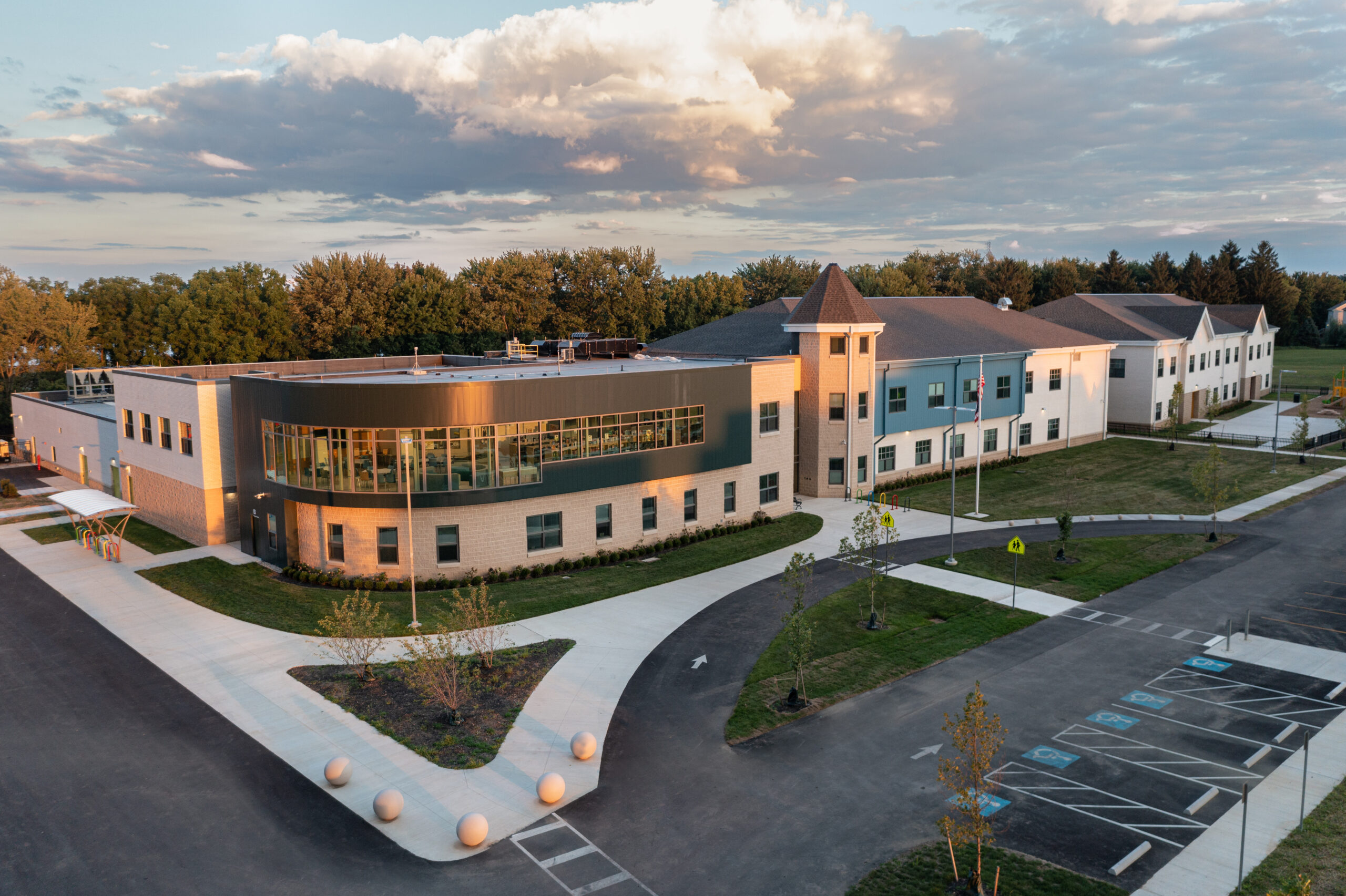
Minerva France Elementary School
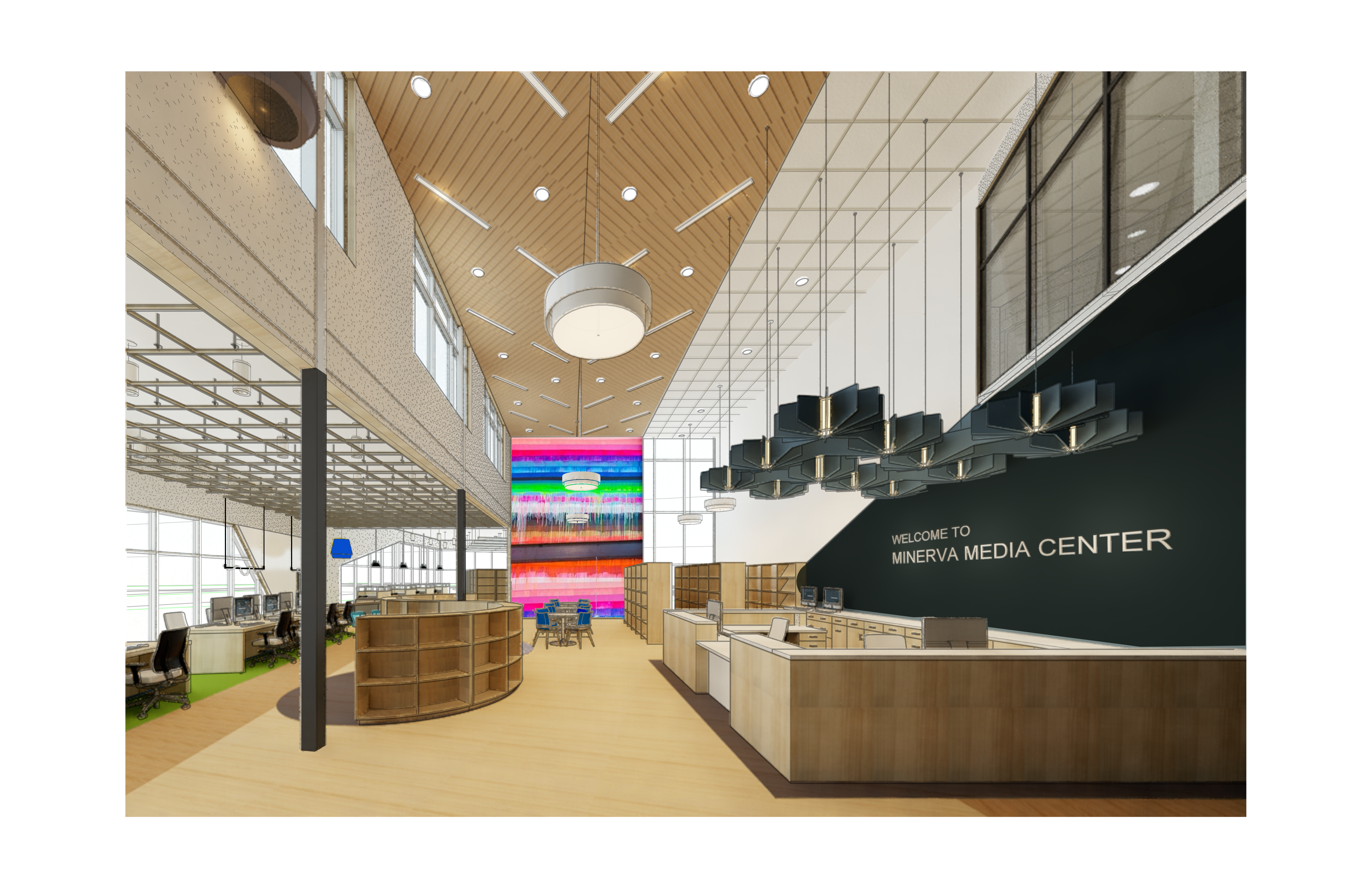
The Media Center at Minerva Park Middle School
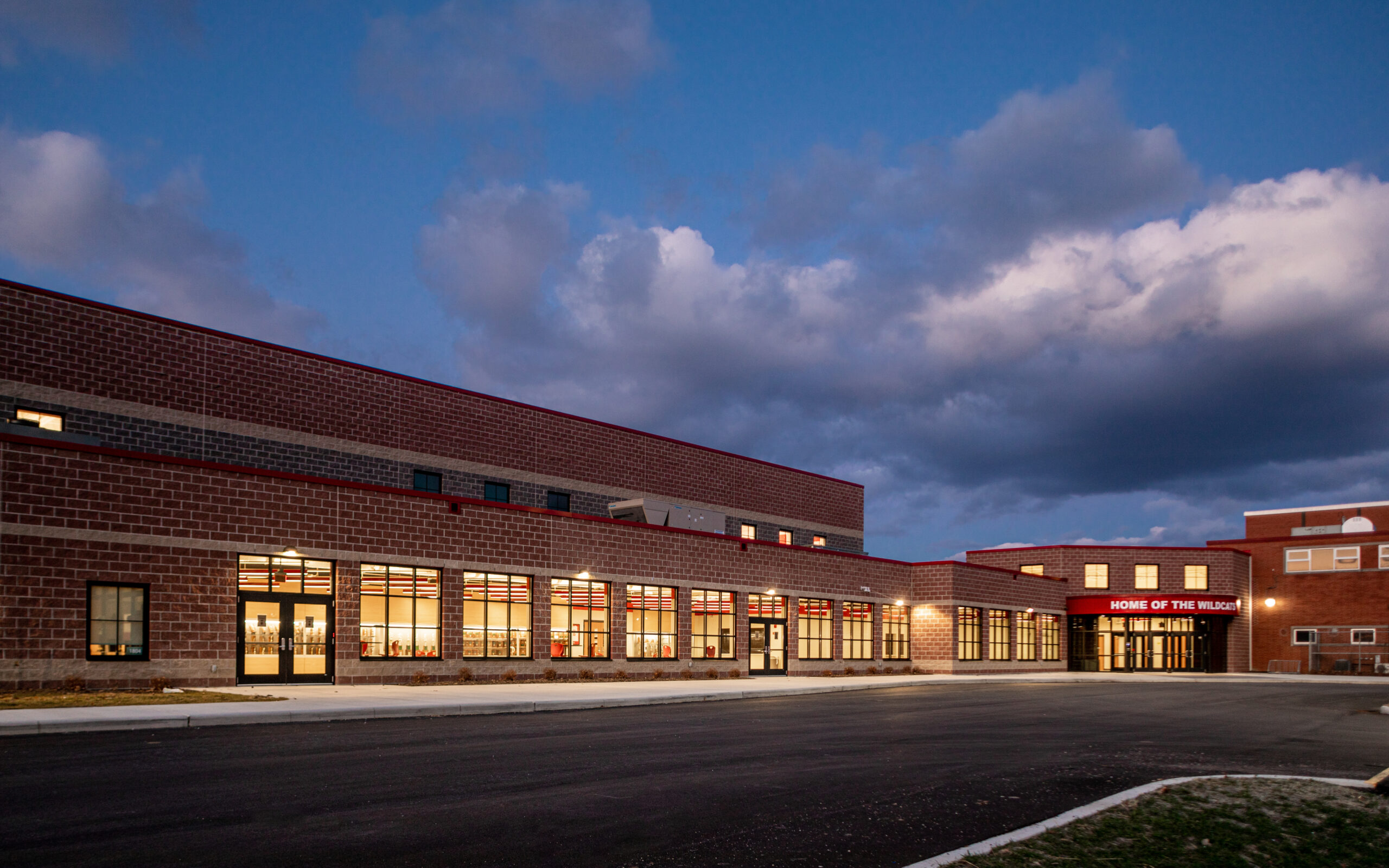
The Gym Addition at Westerville South High School

